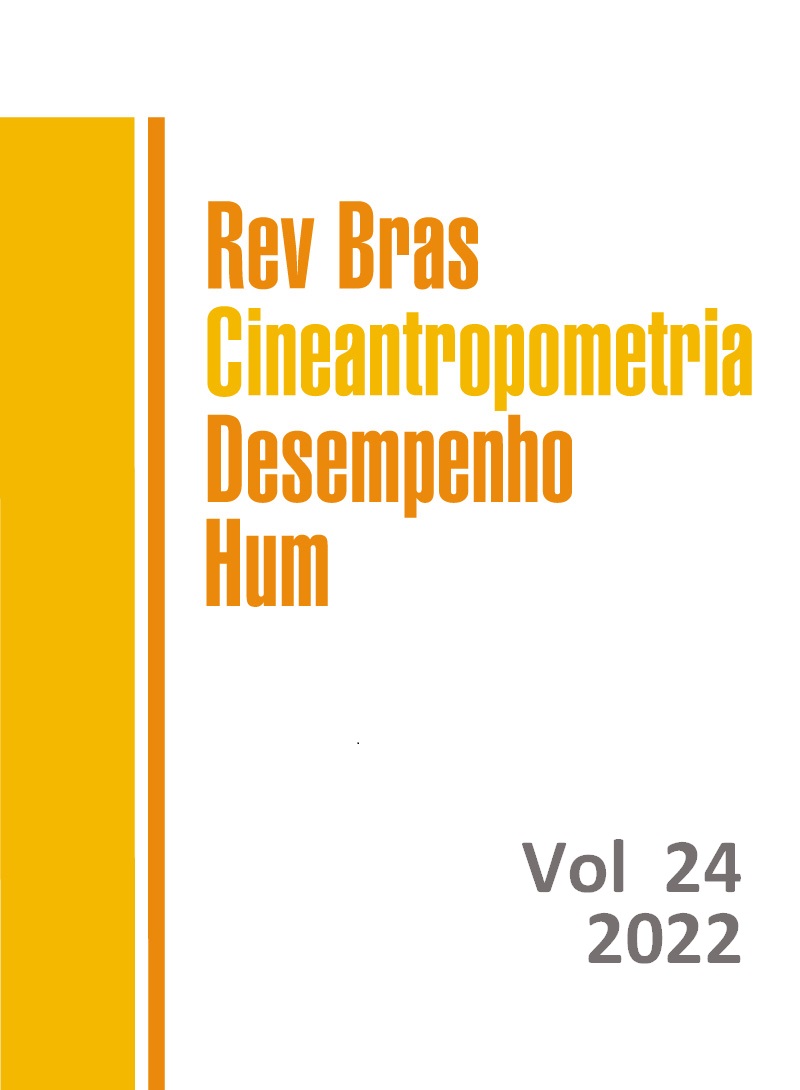A century of skinfolds for body composition estimation: what we learned?
DOI:
https://doi.org/10.1590/1980-0037.2022v24e85412Keywords:
body composition, kinanthropometry, skinfold thicknessAbstract
In 2021, we reached the centenary of the creation of the first body composition assessment model based on the use of skinfolds. A hundred years after Matiegka's application in 1921 to the analysis of “human efficiency”, this point of view study seeks to bring reflections on the continuous applicability of the method, historical points, relevant advances, and possible projections for the future. Indeed, the comparability of skinfolds with multicompartmental reference methods shows several advantages and disadvantages; if on the one hand we have low cost, speed, and reproducibility, on the other hand we have problems associated with the quality of the equipment, the evaluator's skill and mainly the adequate choice of the predictive model. Thus, when it comes to the assessment of body composition, skinfolds are still a good option for application in different contexts by health professionals as long as the evaluator pays attention to the critical aspects that may represent sources of errors (for example, the level of training/experience, correct skinfold location). Even with the numerous advances in the area, there is solidity and continuity for the application of skinfolds for the future.
References
Matiegka J. The testing of physical anthropology. Am J Phys Anthropol. 1921;4(3):223–30.
Orsso CE, Tibaes JRB, Oliveira CLP, Rubin DA, Field CJ, Heymsfield SB, et al. Low muscle mass and strength in pediatrics patients: Why should we care? Clin Nutr. 2019;(xxxx).
Kasper AM, Langan‐evans C, Hudson JF, Brownlee TE, Harper LD, Naughton RJ, et al. Come back skinfolds, all is forgiven: A narrative review of the efficacy of common body composition methods in applied sports practice. Nutrients. 2021;13(4).
Ceniccola GD, Castro MG, Piovacari SMF, Horie LM, Corrêa FG, Barrere APN, et al. Current technologies in body composition assessment: advantages and disadvantages. Nutrition. 2019;62:25–31.
Prado CM, Purcell SA, Alish C, Pereira SL, Deutz NE, Heyland DK, et al. Implications of low muscle mass across the continuum of care: a narrative review. Ann Med [Internet]. 2018 Nov 17;50(8):675–93. Available from: https://www.tandfonline.com/doi/full/10.1080/07853890.2018.1511918
Clarys JP, Provyn S, Marfell-Jones MJ. Cadaver studies and their impact on the understanding of human adiposity. Ergonomics. 2005;48(11–14):1445–61.
Wang, J; THORNTON, J; KOLESNIK, S; PIERSON R. PJ. Anthropometry in Body Composition: An Overview. Ann New York Acad Sci 904(1), 317–326. 2006;904(1):317–26.
Hume P, Marfell-Jones M. The importance of accurate site location for skinfold measurement. J Sports Sci. 2008;26(12):1333–40.
BROZEK J, KEYS A. The evaluation of leanness-fatness in man; norms and interrelationships. Br J Nutr. 1951;5(2):194–206.
Esparza-Ros F, Vaquero-Cristóbal R M-JM. Protocolo internacional para la valoración antropométrica. International Society for the Advancement of Kinanthropometry - ISAK. 2019.
Harrison GG, Buskirk ER, Carter JEL, Johnston FE, Lohman TG, Pollock ML, Roche AF WJ. Skinfold thicknesses and measurement technique. In: Lohman TG, Roche AF MR, editor. Anthropometric standardization reference manual. Champaign: Human Kine; 1988. p. 56.
Silva VS da, Vieira MFS. International Society for the Advancement of Kinanthropometry (ISAK) Global: international accreditation scheme of the competent anthropometrist. Rev Bras Cineantropometria Desempenho Hum. 2020;22.
Nickerson BS, Fedewa M V, Cicone Z, Esco MR. The relative accuracy of skinfolds compared to four-compartment estimates of body composition. Clin Nutr. 2020 Apr;39(4):1112–6.
Merrill Z, Chambers A, Cham R. Development and validation of body fat prediction models in American adults. Obes Sci Pract. 2020 Apr;6(2):189–95.



